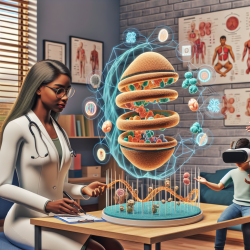Introduction
The intricate relationship between the gut and the brain, known as the gut-brain axis (GBA), is increasingly recognized as a pivotal factor in the development and progression of neurodegenerative disorders (NDDs) such as Alzheimer's disease, Parkinson's disease, and Amyotrophic Lateral Sclerosis (ALS). Recent research highlights the potential of targeting the GBA as a therapeutic approach, offering new avenues for intervention and management of these debilitating conditions.
The Role of the Gut-Brain Axis in Neurodegenerative Disorders
The gut-brain axis is a complex communication network that links the central nervous system with the enteric nervous system, involving direct and indirect pathways such as the vagus nerve, immune system, and hormonal signaling. This axis plays a crucial role in maintaining homeostasis and influencing brain functions like cognition, learning, and memory.
Research indicates that dysbiosis, or an imbalance in the gut microbiota, can contribute to the pathogenesis of NDDs. Inflammation-associated microbiomes are often found in individuals with NDDs, exacerbating neurodegenerative processes. Conversely, restoring gut microbiota balance can potentially mitigate these effects, highlighting the therapeutic potential of the GBA.
Therapeutic Implications
Current treatments for NDDs primarily focus on symptom management rather than addressing the underlying disease pathology. The exploration of the GBA offers a novel therapeutic target, with interventions aimed at modulating the gut microbiota to influence brain health positively.
For instance, the use of short-chain fatty acid-producing bacteria has shown promise in maintaining gut homeostasis and reducing inflammation. Furthermore, stem cell therapy targeting the GBA is emerging as a potential strategy to promote neuroregeneration and repair.
Encouraging Further Research
Given the promising findings, it is crucial for practitioners to stay informed and consider the implications of the GBA in their therapeutic approaches. Further research is needed to fully understand the mechanisms at play and to develop effective interventions that leverage the GBA for improved outcomes in NDDs.
Practitioners are encouraged to explore the latest research, collaborate with interdisciplinary teams, and consider integrating GBA-focused strategies into their practice to enhance patient care.
Conclusion
The gut-brain axis represents a promising frontier in the treatment of neurodegenerative disorders. By understanding and harnessing this connection, we can develop innovative therapies that not only alleviate symptoms but also address the root causes of these conditions. As we continue to explore the GBA, we move closer to achieving better outcomes for individuals affected by NDDs.
To read the original research paper, please follow this link: Gut–Brain Axis as a Pathological and Therapeutic Target for Neurodegenerative Disorders.










